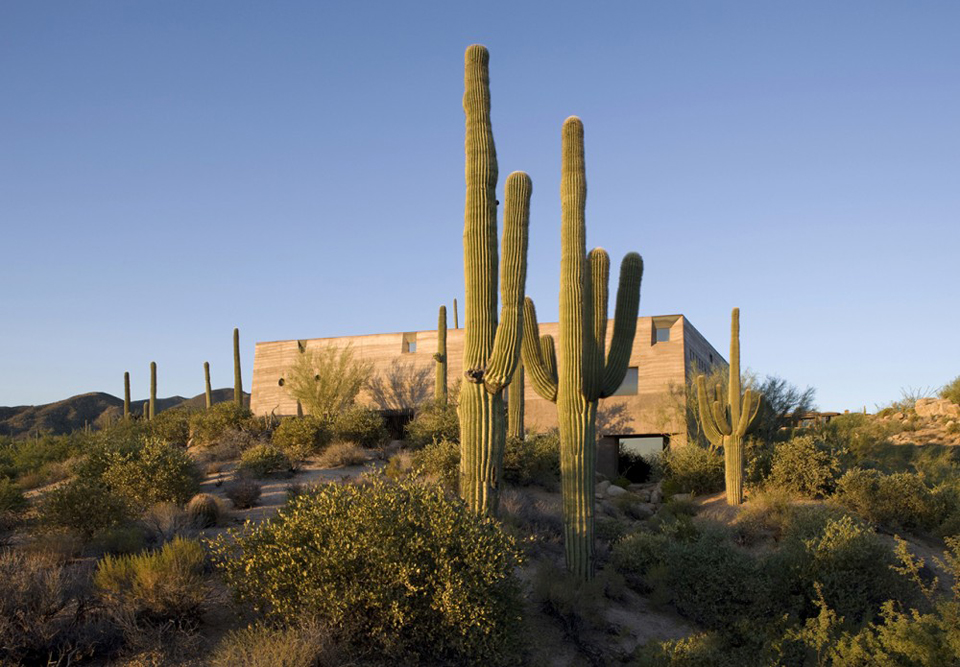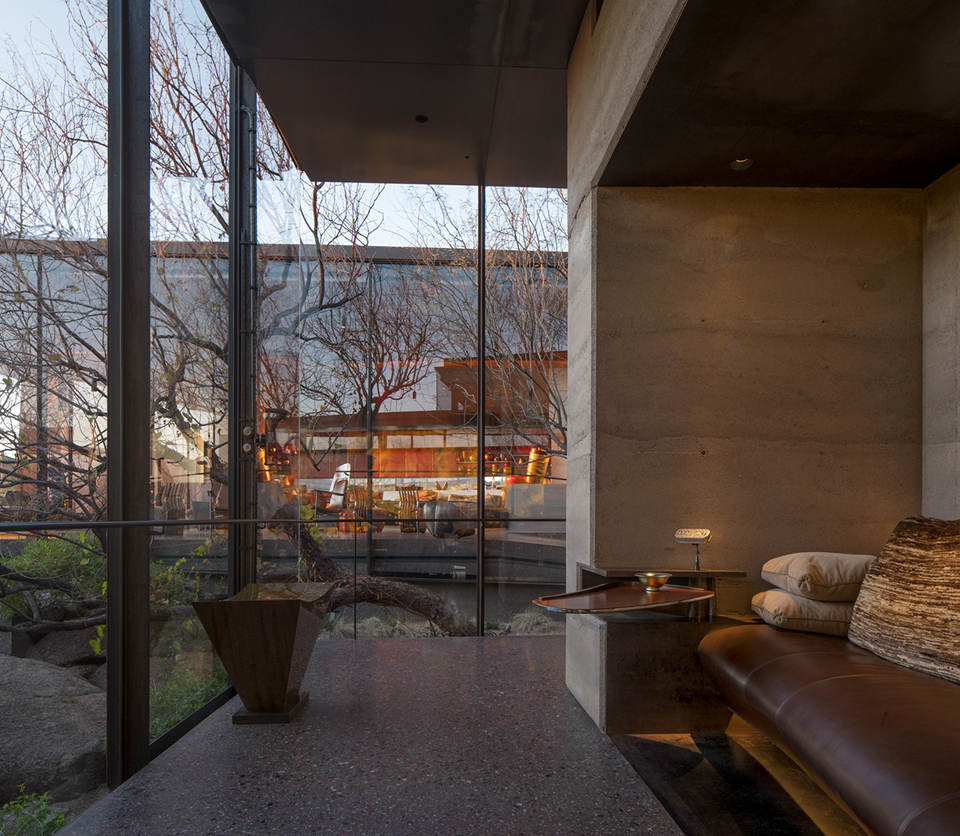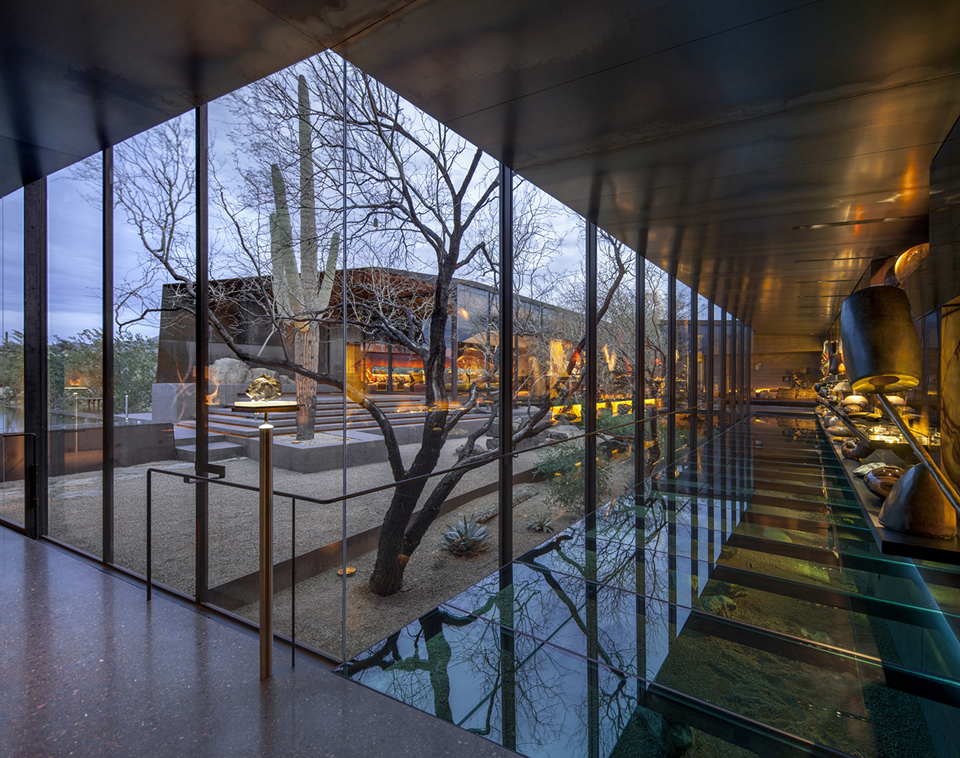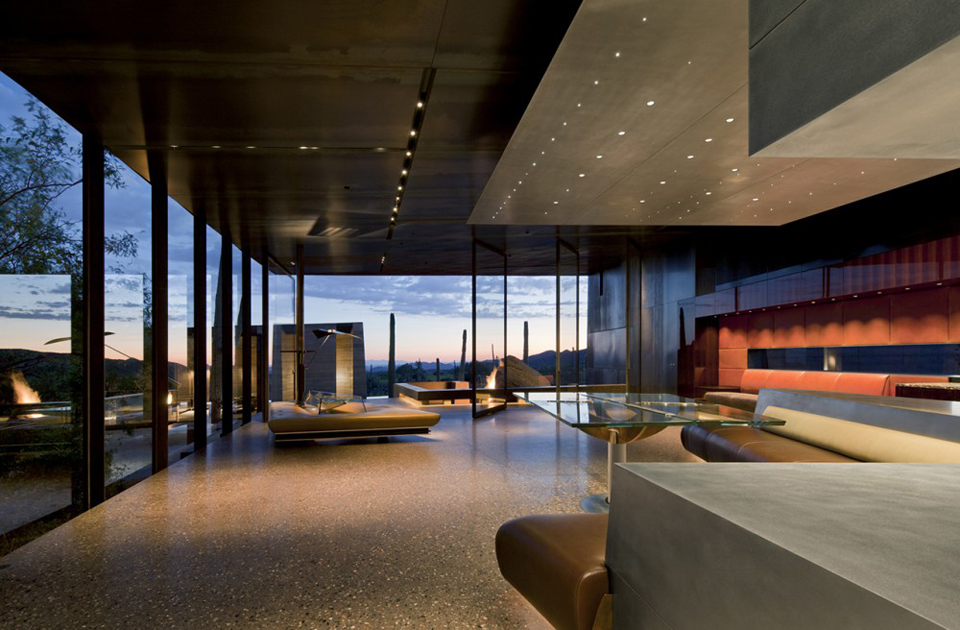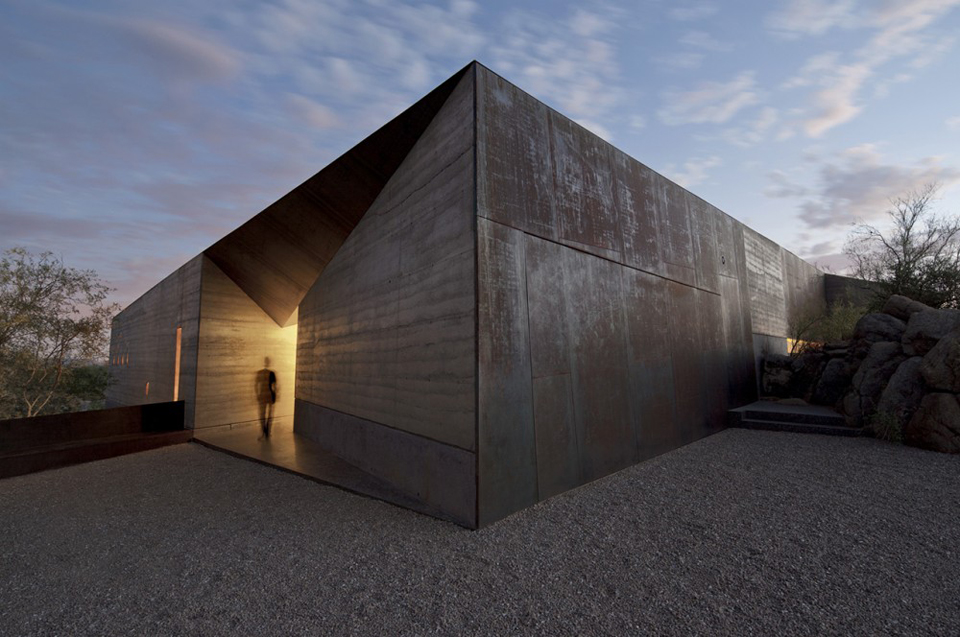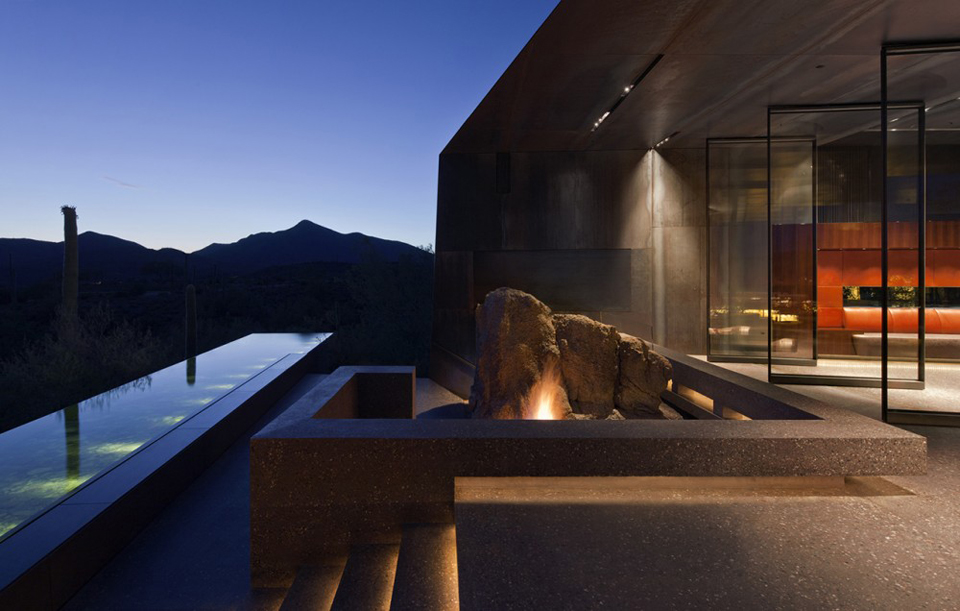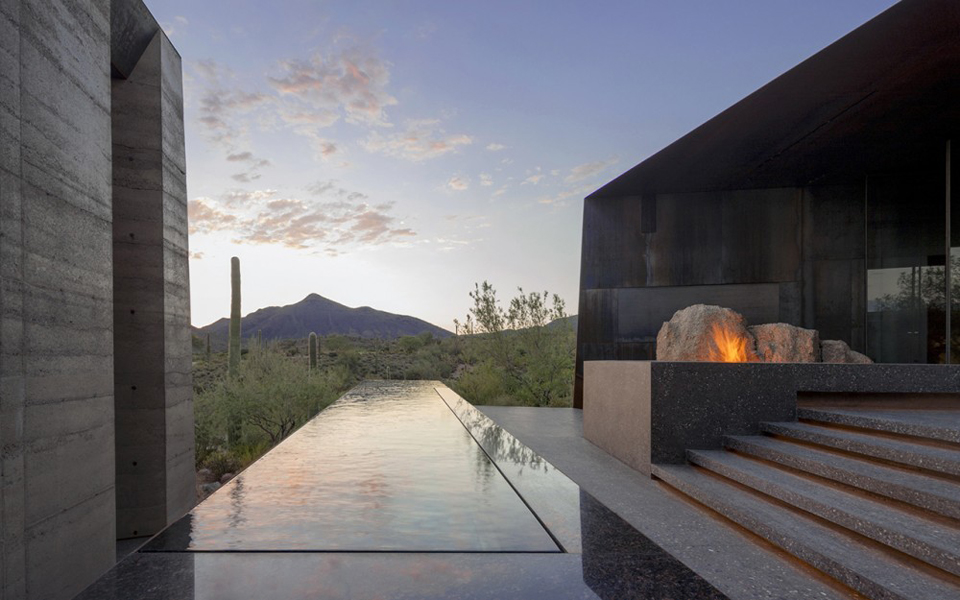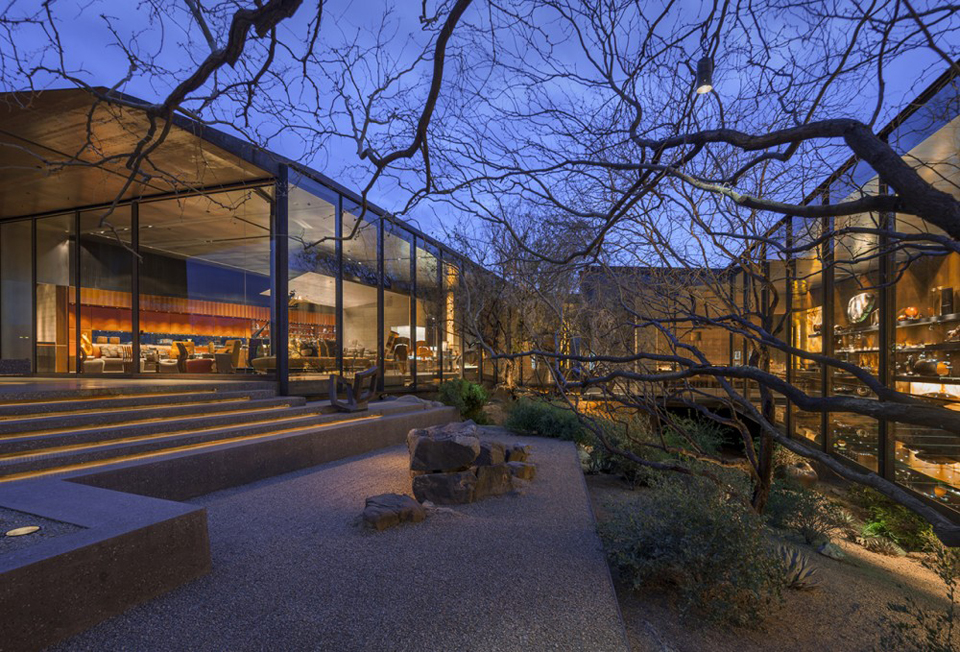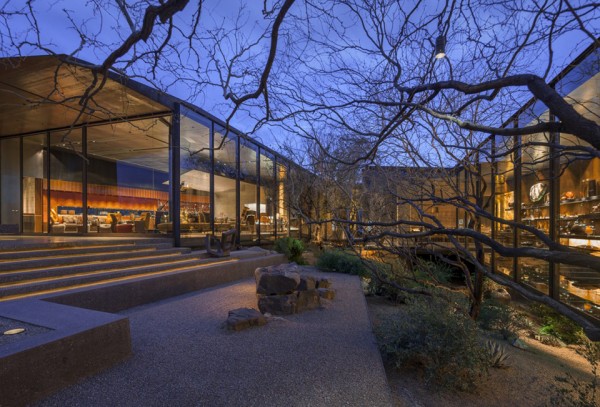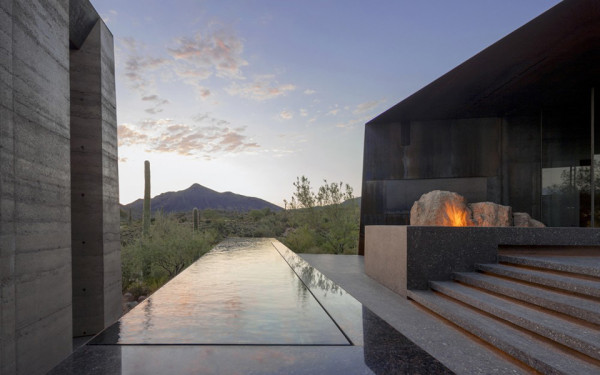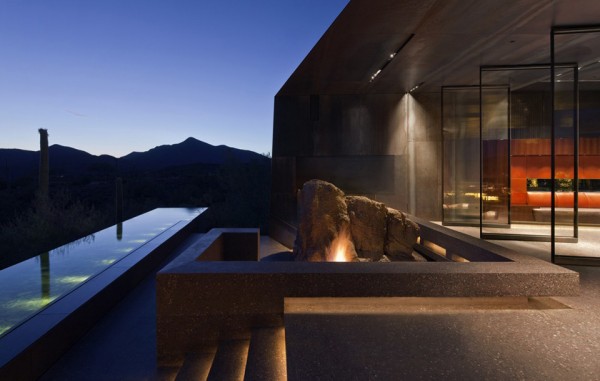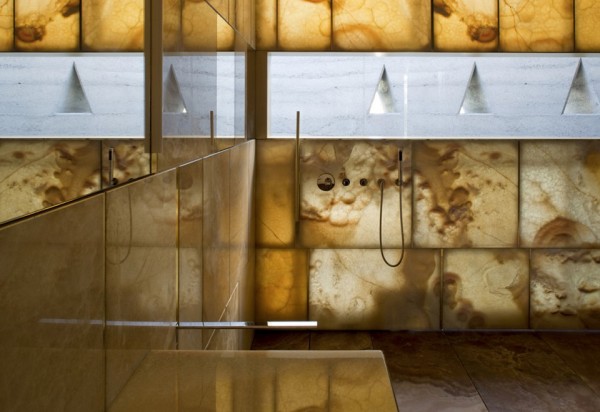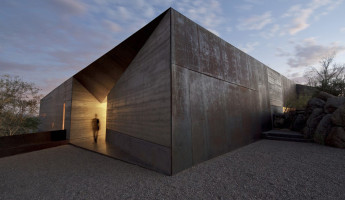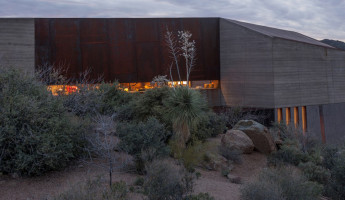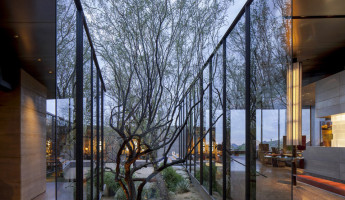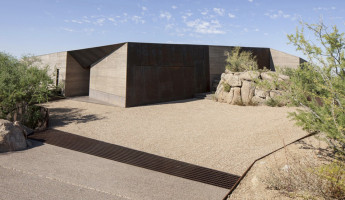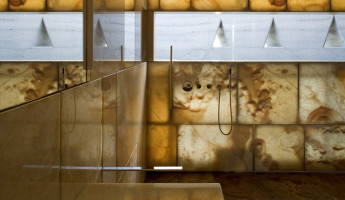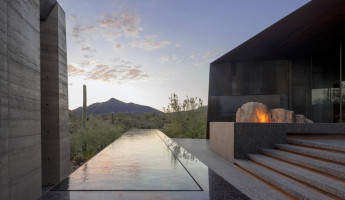To ensure privacy from the watchful eyes of the local community, and create a property that integrates into its surroundings, the architects made sure to recede the house so that it appears as nothing more than a deep shadow on the landscape. Inside however, the story is very different. Huge glass windows all around the interior courtyard showcase the spaces within, while water trickles through a fractured granite boulder field and a rush of cattails to create a stunning, yet surprisingly serene living space. Some of the desert has been allowed to creep inside the property, characterized by the large arrow-shaped granite boulder, a peculiar group of volcanic rocks, and a large multi-armed cactus. Even better, the soil from the desert itself has been used to create rammed earth walls, which are not only sustainable, but also provide excellent insulation. Even though concrete was used for other parts of the building, the architects experimented with a “local mix,” and aimed to “reveal the composite qualities of the material, sand, conglomerate gravel, pebbles, broken stone, in a cement matrix, and consequently a window into the geologic time of this place.” [photography by Bill Timmerman]
View in gallery
Desert Courtyard House by Wendell Burnette Architects | Gallery
